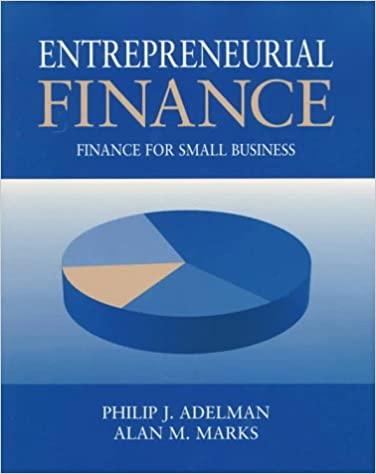Answered step by step
Verified Expert Solution
Question
1 Approved Answer
Clifford Clark is a recent retiree who is interested in investing some of his savings in corporate bonds. His financial planner has suggested the following
Clifford Clark is a recent retiree who is interested in investing some of his savings in corporate bonds. His financial planner has suggested the following bonds:
Bond A has an annual coupon, matures in years, and has a $ face value.
Bond has a annual coupon, matures in years, and has a $ face value.
Bond has a annual coupon, matures in years, and has a $ face value.
Each bond has a yield to maturity of
The data has been collected in the Microsoft Excel file below. Download the spreadsheet and perform the required analysis to answer the questions below. Do not round intermediate calculations. Use a minus sign to enter negative values, if any. If an answer is zero, enter
Download spreadsheet Bond ValuationebxIsx
a Before calculating the prices of the bonds, indicate whether each bond is trading at a premium, at a discount, or at par.
Bond is selling at because its coupon rate is the going interest rate.
Bond is selling at because its coupon rate is the going interest rate. Bond is selling at because its coupon rate is the going interest rate.
b Calculate the price of each of the three bonds. Round your answers to the nearest cent.
b Calculate the price of each of the three bonds. Round your answers to the nearest cent.
Price Bond : $
Price Bond : $
Price Bond C: $
c Calculate the current yield for each of the three bonds. Hint: The expected current yield is calculated as the annual interest divided by the price of the bond. Round your answers to two decimal places.
Current yield Bond :
Current yield Bond B:
D
Current yield Bond C:
b
d If the yield to maturity for each bond remains at what will be the price of each bond year from now? Round your answers to the nearest cent.
Price Bond : $
Price Bond
Price Bond C: $
What is the expected capital gains yield for each bond? What is the expected total return for each bond? Round your answers to two decimal places.
Bond
Bond B
Bond C
Expected capital gains yield

Step by Step Solution
There are 3 Steps involved in it
Step: 1

Get Instant Access to Expert-Tailored Solutions
See step-by-step solutions with expert insights and AI powered tools for academic success
Step: 2

Step: 3

Ace Your Homework with AI
Get the answers you need in no time with our AI-driven, step-by-step assistance
Get Started


